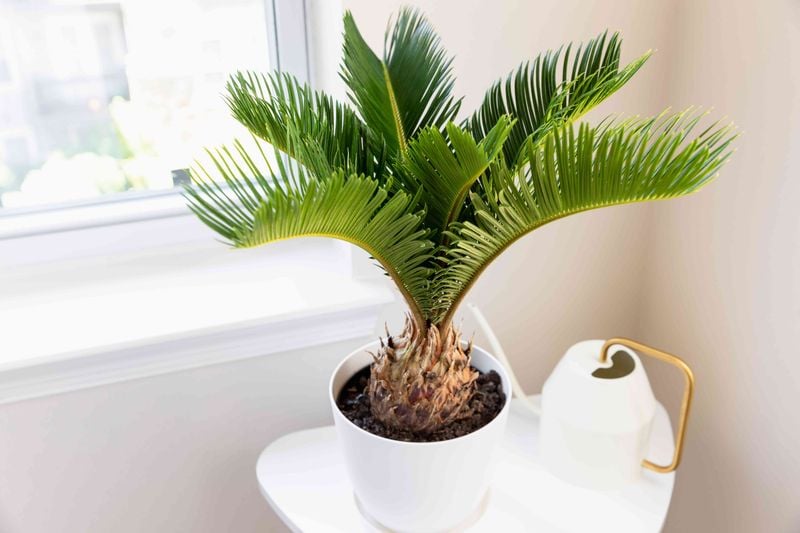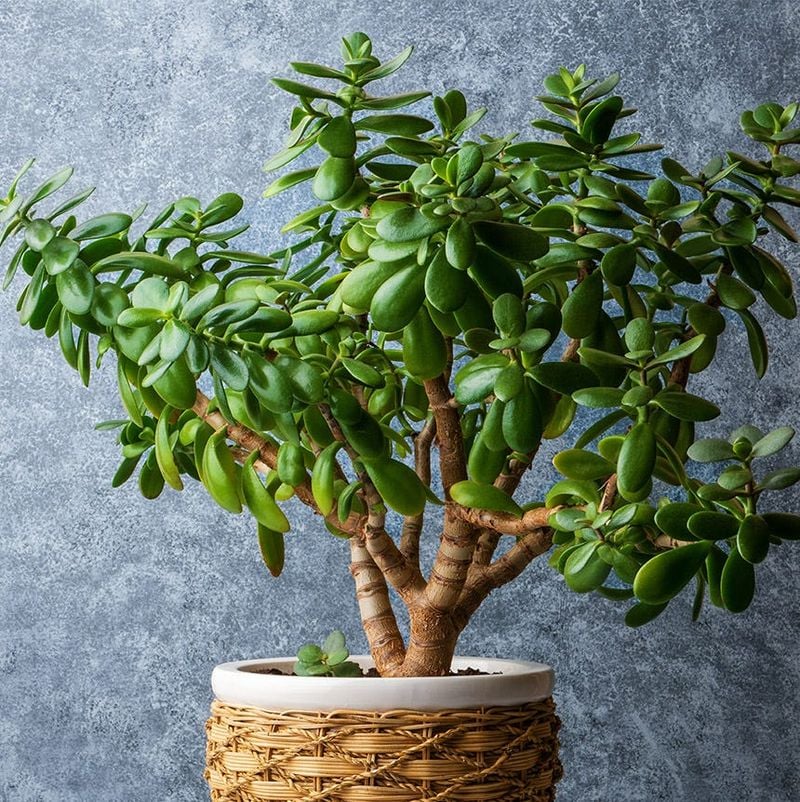10 Beautiful Houseplants That Are a Hidden Threat to Your Dog
Many of us love filling our homes with lush, green houseplants to create a calming space. But if you’re a dog owner, you should know that some of the prettiest plants could actually harm your furry friend.
Dogs are naturally curious creatures who explore their world with their mouths, making them vulnerable to plant poisoning. Being aware of which common houseplants pose risks can help keep your pup safe while still enjoying your indoor garden.
1. Sago Palm: The Deceptively Deadly Decorator
This elegant, tropical-looking plant resembles a miniature palm tree but packs a deadly punch for canines. Every part of the Sago Palm contains cycasin, a toxin that can cause severe liver damage in dogs, with mortality rates as high as 50-75% when ingested.
Even a small nibble can lead to vomiting, diarrhea, seizures, and liver failure within hours. The seeds contain the highest concentration of toxins, but the leaves and trunk are dangerous too.
Despite its beauty and popularity as a houseplant or outdoor ornamental in warmer climates, dog owners should absolutely avoid bringing this plant into their homes.
2. Aloe Vera: Healing for Humans, Harmful for Hounds
Known worldwide for its soothing properties for human skin, Aloe Vera hides a dangerous secret for your canine companion. The gel inside might be beneficial for us, but the plant contains saponins that can cause vomiting, depression, diarrhea, and tremors in dogs.
Most concerning are the outer layers of the plant, which contain the highest concentration of these toxic compounds. Your pup might be attracted to this succulent’s unique shape and texture.
Consider keeping this medicinal plant in a hanging basket or on a high shelf where curious paws and mouths cannot reach it if you must have it in your home.
3. Dieffenbachia: The Silent Mouth Burner
Nicknamed “Dumb Cane” for good reason, Dieffenbachia contains calcium oxalate crystals that can cause immediate burning and swelling of the mouth and throat when chewed. These microscopic, needle-shaped crystals can lead to temporary voice loss in humans – and similar painful reactions in dogs.
Your four-legged friend might experience excessive drooling, difficulty swallowing, and intense oral pain after just one curious bite. The plant’s large, beautifully patterned leaves make it an attractive target for playful pups.
Veterinary care should be sought immediately if you suspect your dog has sampled this common houseplant, as throat swelling can sometimes compromise breathing.
4. Philodendron: Heart-Shaped Leaves, Heartbreaking Effects
Those charming heart-shaped leaves might win your heart, but they spell trouble for your canine companion. Philodendrons contain insoluble calcium oxalate crystals similar to Dieffenbachia, causing immediate pain and irritation to the mouth, tongue, and lips when bitten.
Dogs who chew on this popular houseplant often show signs of distress through pawing at their face, drooling excessively, and refusing food due to oral pain. The trailing varieties pose an extra risk as they can dangle temptingly within reach of curious pups.
While rarely fatal, the intense discomfort these plants cause makes them a poor choice for households with dogs who like to investigate plants with their mouths.
5. Pothos: The Devil’s Ivy Lives Up to Its Name
Golden Pothos earned its nickname “Devil’s Ivy” for its nearly indestructible nature, but for dogs, the devilish part lies in its toxic properties. This vining plant with heart-shaped, often variegated leaves contains calcium oxalate crystals that cause immediate oral irritation and pain.
A determined dog who manages to ingest larger amounts may experience more severe symptoms including stomach upset, excessive drooling, and difficulty swallowing. Its trailing vines and ability to grow in low light make it a popular choice for many homes.
Consider hanging these plants well out of reach or replacing them with pet-safe alternatives like spider plants or Boston ferns if you have a curious canine.
6. Oleander: Beauty That Belies Deadly Danger
With its stunning pink, white, or red flowers, Oleander might seem like the perfect decorative houseplant. However, this Mediterranean beauty hides a sinister secret – it’s one of the most toxic plants for dogs, with every part containing potent cardiac glycosides.
Just a few leaves can cause serious heart problems, including abnormal heart rate and rhythm that can be fatal. Dogs may show symptoms like drooling, abdominal pain, diarrhea, and in severe cases, collapse.
Outdoor Oleanders pose risks too, so be vigilant during walks if these plants grow in your neighborhood. The dried leaves remain toxic, so even fallen debris around the plant presents danger.
7. English Ivy: Climbing Beauty with a Toxic Touch
That classic ivy trailing elegantly from your bookshelf harbors a hidden threat to your four-legged friend. English Ivy contains triterpenoid saponins that can cause gastrointestinal upset, excessive drooling, and even breathing difficulties if your dog decides to make it a snack.
The leaves pose the greatest risk, particularly to small dogs who need less of the toxin to experience serious effects. Some dogs may also develop contact dermatitis just from brushing against the plant, resulting in skin irritation and itchiness.
If you love the look of trailing plants, consider pet-safe alternatives like Swedish ivy or prayer plants that provide similar aesthetic appeal without the risk.
8. Peace Lily: Ironically Unpeaceful for Pets
The Peace Lily’s elegant white blooms might bring tranquility to your decor, but they bring anything but peace to dogs who nibble on them. Like several plants on this list, Peace Lilies contain calcium oxalate crystals that cause immediate burning and irritation to the mouth and digestive tract.
A curious pup who takes a bite will likely show signs of discomfort quickly – drooling, pawing at the mouth, and refusing food due to pain. While less toxic than some other houseplants, the intense discomfort can be significant.
The good news is that most dogs stop after one taste due to the immediate irritation, preventing them from consuming large amounts.
9. ZZ Plant: Easy-Care but Hard on Canines
Praised for its ability to thrive in low light and with minimal care, the ZZ Plant has become a favorite among plant novices. Unfortunately, this hardy plant contains calcium oxalate crystals that can irritate your dog’s mouth, throat, and stomach if chewed.
The thick, waxy leaves might attract dogs who enjoy the texture, but a single bite will cause burning sensations and inflammation. While fatalities are rare, the discomfort can last for hours or even days as the tiny crystals continue to irritate sensitive tissues.
If you have this low-maintenance beauty, place it on high shelves or in rooms your dog doesn’t access to avoid potential problems.
10. Jade Plant: Succulent Danger in Disguise
Often given as housewarming gifts symbolizing prosperity, these popular succulents with plump, oval leaves contain unknown toxins that can cause vomiting, depression, and uncoordinated movements in dogs. Unlike plants with immediate irritation effects, jade plant poisoning might not show symptoms for several hours.
The rubbery, toy-like texture of jade leaves can be particularly enticing to playful puppies who might see them as something fun to chew. Their small size and low-growing habit also make them easily accessible to dogs of all sizes.
If you suspect your dog has eaten jade plant leaves, contact your veterinarian, as symptoms can sometimes be confused with other conditions.
















